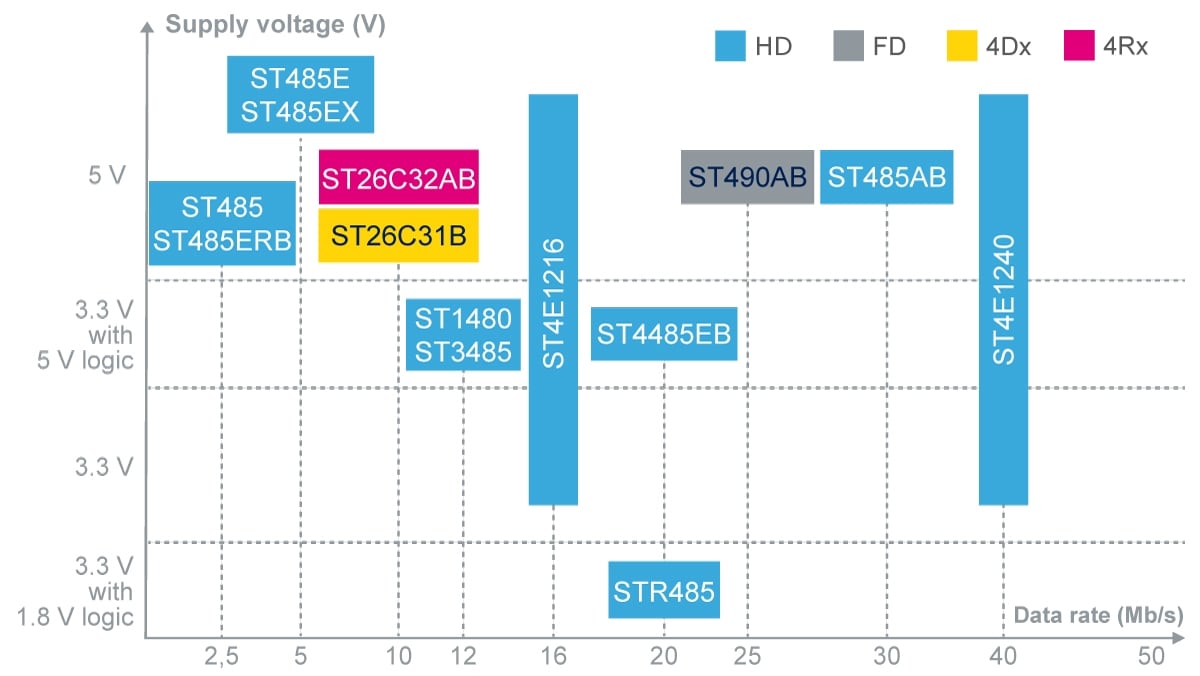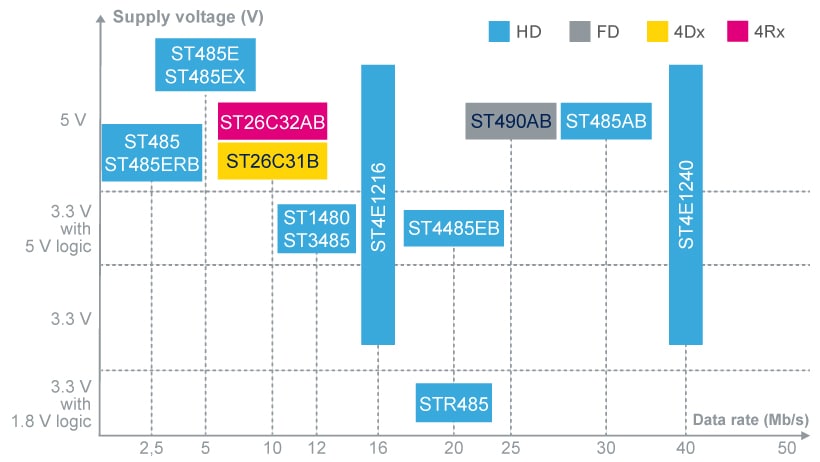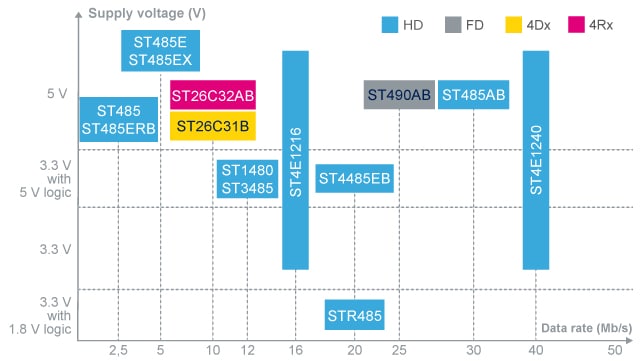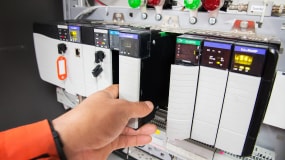High-speed data networks push for data rates over extended transmission distances and in increasingly robust conditions
TIA/EIA-485A communication standard, or RS-485 specifies the electrical characteristics of generators and receivers that may be employed when specified for the interchange of binary signals in multipoint interconnection of digital equipment. The RS-485 serial communication protocol is one of the most widely used communication protocols for supporting inexpensive local networks offering highly reliable transmitted data and multidrop communications links. RS-485 transceivers today feature high-speed data communication and improved robustness of the bus transmission line to guarantee a high level of data integrity.
Use cases and application examples
Discover our offer
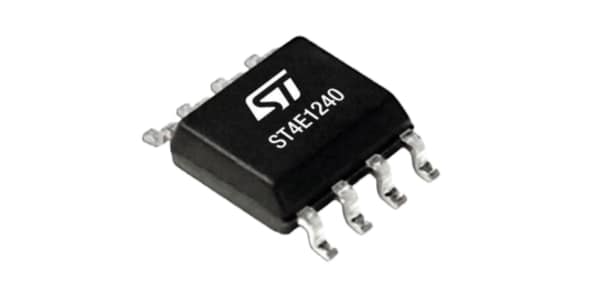
ST4E1240
40 Mbps, 3.3 V / 5 V RS485 transceiver with ± 12 kV IEC 61000-4-2 contact ESD protection.
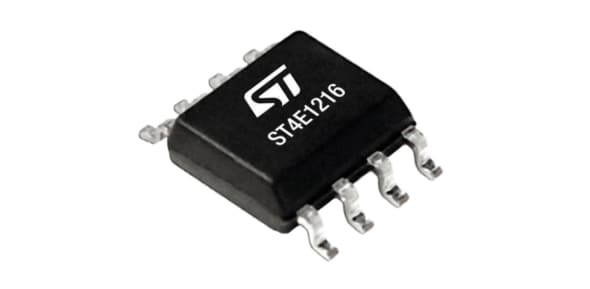
ST4E1216
16 Mbps, 3.3 V / 5 V RS485 transceiver with ± 12 kV IEC 61000-4-2 contact ESD protection.
Key features and benefits
- Supply voltage range from 3.3 to 5 V for low and high data rate allowing flexible integration
- Bus terminals A and B are protected against ESD, fast transient coupling, hot swap, thermal shutdown and indeterminate state for robustnes
- Data rate, large VOD and number of nodes (minimum 64 nodes for the ST4E1240) for PROFIBUS compatibility
- Low current consumption in both standby and normal operation (no load)
Discover our complete transceiver portfolio
This family of transceivers is designed for communication applications using RS-485, RS-422, and RS-423.
